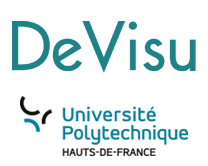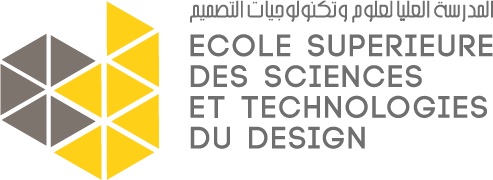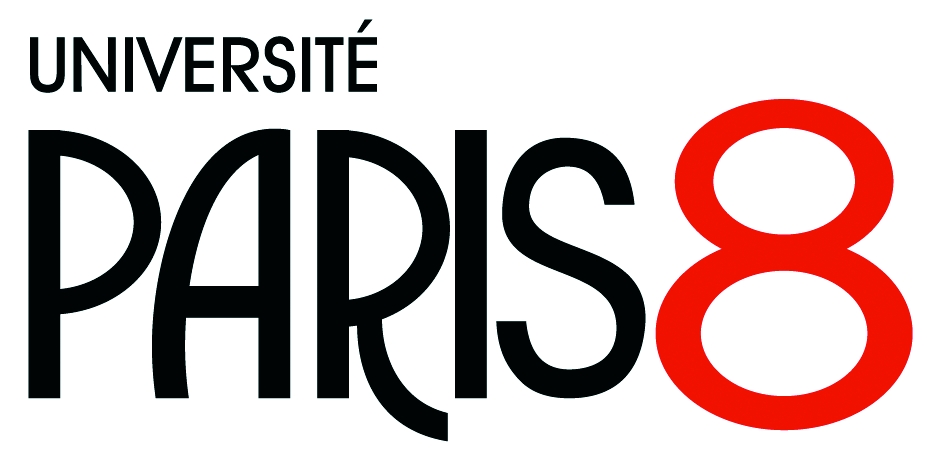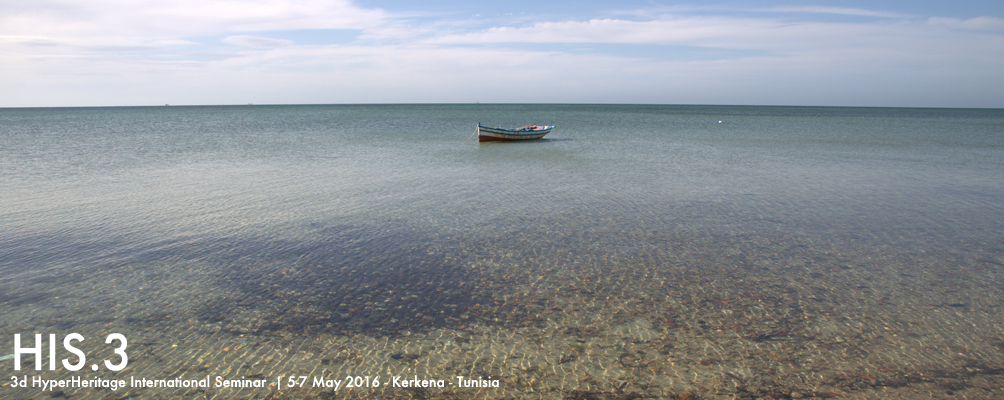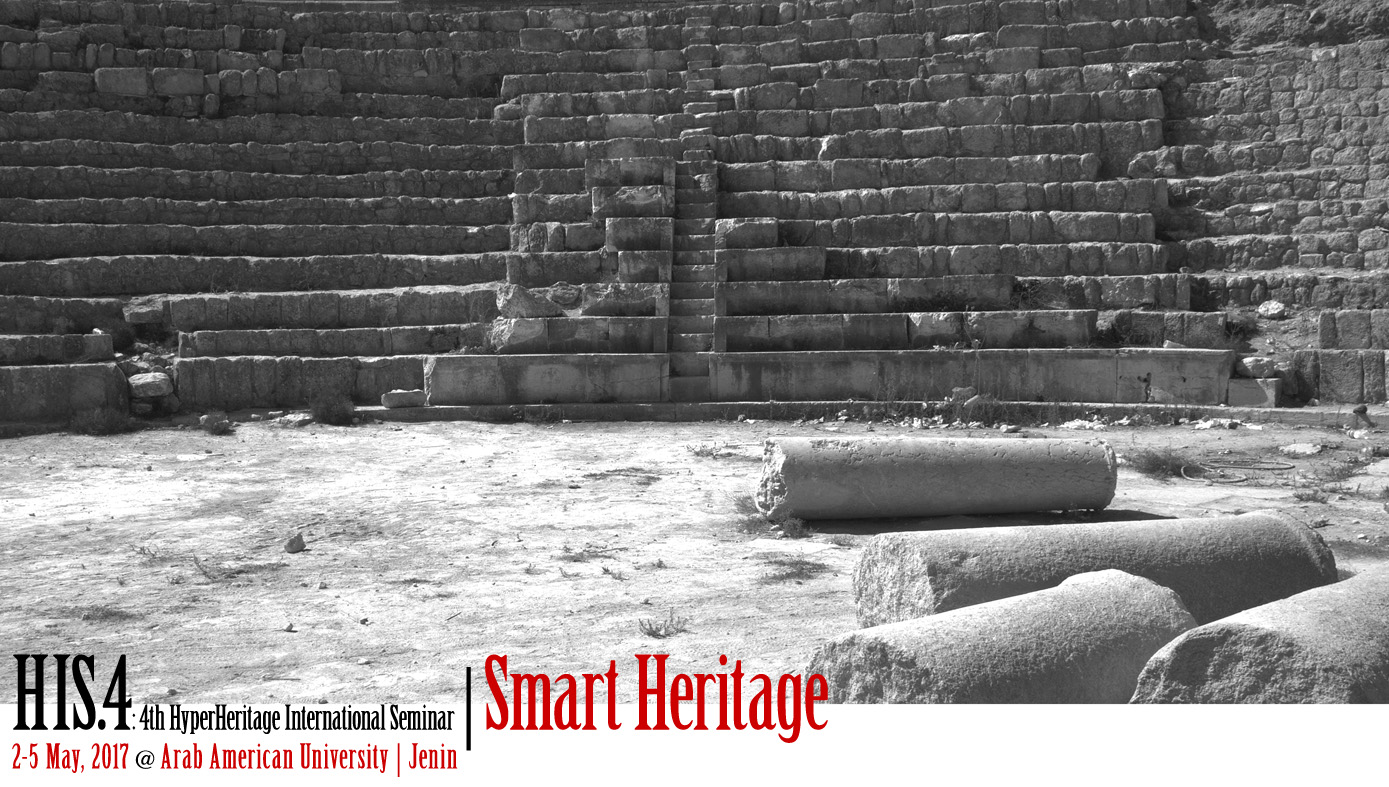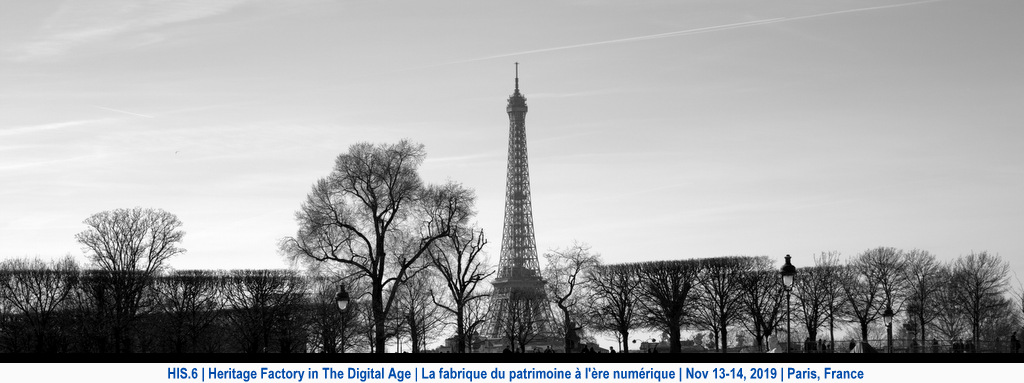
- HIS6
- CFP
- Submission
- Program
- Registration
- About HIS
- HIS.6 Committees
- Information
- Ads | Links
La fabrique du patrimoine à l'ère numérique
Heritage Fabric in the Digital Age6th Hyperheritage International Symposium
November 13-14, 2019 | Institut d'Etudes Avancées de Paris | Hôtel de Lauzun, 17 quai d'Anjou 75004 Paris, France
The term HyperHeritage covers every hybrid cultural heritage environment augmented with digital information inviting us to explore new ways of perceiving, experiencing and practicing cultural heritage. Massive developments on ICT and the unprecedented spread of mobile, location-aware and immersive (Augmented and Virtual Reality) technologies and devices, advocate for the exploration of new forms of Human to Human, Human-Computer and Human-Environment interaction and information communication on Cultural Heritage. These advances also imply gradually establishing new ways and means to comprehend, access, process, experience and perceive digital and interconnected Cultural Heritage information on a variety of delivery platforms, devices and environments.
Human-to-Human computer-mediated communication protocols, are inviting information designers to reconsider the design of all digitally augmented Cultural-Heritage environments. Rather than questioning or challenging the role of traditional Cultural Heritage institutions, HyperHeritage comes to offer new communication means for processing, experiencing and perceiving Cultural Heritage information, as produced, created, consumed and experienced in all digitally interconnected dimensions and spaces.
In June 2016, at the last conference, UNESCO reaffirmed the importance of tangible and intangible cultural heritage for the preservation and promotion of culture and as an engine for sustainable development.
We are moreover witnessing an increased engagement from researchers, social actors, institutions and diverse publics for reconceptualising the transmission of cultural heritage in all its dimensions. This phenomenon is inherent to the preservation, development, experiencing and transmission of cultural heritage. It occurs in different temporalities and merges all facets of cultural heritage as it is experienced, perceived and lived. It also evokes issues related with concepts such as the construction of self, identity, emotions, memory, creativity and imaginary heritage spaces.
The sixth HyperHeritage International Symposium (HIS.6) will be focusing –yet not limited- on the theme "Heritage Factory in the Digital Age".
Le terme HyperHeritage recouvre tout environnement hybride du patrimoine culturel (enrichi d'informations numériques) qui permet d'explorer de nouvelles facettes relatives à la perception et à la pratique de l'information culturelle. Le développement massif et l'utilisation impressionnante des TIC (technologies de l'information et de la communication) et des dispositifs immersifs (réalités augmentées et virtuelles) ont permis d'explorer de nouvelles formes de communication entre l'humain et l'information patrimoniale et culturelle. Les TIC ont mis au point de nouveaux moyens, souvent indépendants de l'espace et du temps, pour atteindre et traiter l'information et les dispositifs du patrimoine culturel interconnecté.
Les nouveaux protocoles de communication «médiatisés» entre humains, invitent les designers d'information à reconsidérer l'environnement informationnel du patrimoine culturel. Cependant, il est important de noter que l'idée de "HyperHeritage" ne vise pas à interroger les Institutions Culturelles Traditionnelles ; elle suggère d'autres façons de percevoir et de traiter l'évolution de l'Information Culturelle et Patrimoniale dans des espaces illimités et fortement interconnecté.
En juin 2016, lors de la dernière conférence, l’UNESCO a réaffirmé l'importance du patrimoine, matériel et immatériel pour la préservation et la promotion de la culture, et comme moteur du développement durable.
Par ailleurs, nous assistons de plus en plus à une volonté de la part de chercheurs, d’acteurs sociaux, mais aussi de passionnés, de concevoir la transmission du patrimoine. Ce phénomène inhérent au maintien et au développement d’une culture, est constitué de plusieurs temporalités et mêle d’une part « le patrimoine perçu » et « le patrimoine vécu » , mais interpelle aussi l’identité, la mémoire, le rêve, l’imaginaire, la créativité, l’émotion, etc.Le sixième symposium international sur l'hyperhéritage (HIS.6) se concentrera, sans toutefois s'y limiter, sur la fabrique du patrimoine à l'ère numérique.
HIS.6 is sponsored by | HIS.6 est parrainé par :
Pargraphe, University Paris8 Chaire ITEN - UNESCO FMSH
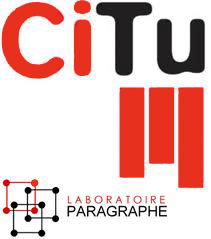
DeVisu-UPHF
University of Constantine3
AAUP
ESSTD
GERiiCO
UMONS
Université Paris8
IAE
La fabrique du patrimoine à l'ère numérique
Heritage Fabric in the Digital Age6th Hyperheritage International Symposium
November 13-14, 2019 | Institut d'Etudes Avancées de Paris | Hôtel de Lauzun, 17 quai d'Anjou 75004 Paris, France
Can intangible cultural heritage be considered as a reflect of cultural diversity? Could it bring out and enhance the singularity and the identity of a territory, a population or a society regarding the standardization driven by the dynamics of museums commodification, culture in global cities and regarding the impact of cultural industries?
UNESCO's notion of intangible heritage opens up new field of exploration including many activities and human experiences: "oral traditions and expressions, including language as a vehicle of the intangible cultural heritage; performing arts; social practices, rituals and festive events; knowledge and practices concerning nature and the universe; traditional craftsmanship." (2003 Convention(1)). Heritage is central to human societies, it is the thread between the past and the future.
Internet, Semantic Web, Social Networks, Artificial Intelligence, Blockchains, contribute to producing new forms of expression, of digital mediations, that condition our relationship to "reality". A strong correlation has emerged between the "real" world, a virtual dimension (represented by digital spaces hosted on ultra-connected machines) and heritage. Digital applications, new interfaces and smart objects (smartphones, tablets, ...) have carried on interconnection betwen individuals, territories and objects. These digital spaces and especially the Web, have allowed the emergence of new forms of expression and the emergence of digital heritage (native or digitlized), in the form of cultural, educational and other resources, whose volume is increasingly growing. Would, its immaterial nature and its appearance conditions, be considered as qualifiable data of "intangible heritage"? The heritage status and durability of these digital objects raises many questions. Legibility and preservation of this type of highly volatile heritage become major issues and would be the object of specific research area. The uninterrupted technological advancement make extremely complex the safeguarding, the access and the restitution, in the long term, of this inheritance. The theoretical and technical commitment of the actors of the field is essential to make emerge reasoned, innovative and sustainable solutions. This call for contributions is part of twofold objective: to deepen the status of these emerging digital expressions, to understand the role that different technologies play in their durability, visibility and mastery.
The 6th edition of HIS is particularly interested in, and not limited to, the folowing topics:
-Intangible heritage
-Ephemeral Heritage (Digital Art, Blogs, etc.)
-Digital heritage fabrics
-Invisible heritage,
-Destruction of heritage (including digital)
-Relation to heritage in the digital era
-Duplicated heritage (real / digital)
-Hybride heritage (real / digital)(1) https://ich.unesco.org/en/conventio)
Extended Topics (key words)
- Augmented Reality and Virtual Reality for Cultural Heritage
- Cultural Heritage applications and Big Data
- Computer Vision for Cultural Heritage
- Archives and Data Management
- Data Visualisation and Cultural Heritage
- Spatial data mining and Cultural Heritage
- Serious Games for Cultural Heritage
- Cultural Heritage Formal and Informal Education and Tools
- Cultural Heritage Information acquisition, restitution and retrieval
- Cultural Heritage Information Design
- Experience Design
- Advanced digitization & scanning
- GIS services and architectures for CH
- Human-Cultural Heritage Interaction
- Hyper Heritage Project Development & Management
- Hypermedia
- Internet-of-Things (IoT)
- Modeling and Simulation approaches
- Open Cultural Heritage Data Management
- Social Networks & Communities in Cultural Heritage
The conference aspires to explore and compare emerging scientific approaches on these topics. Authors are invited to submit papers describing past and current research projects and initiatives, as well as experience with proof-of-concept, prototype and operational systems.
Instructions to Authors
1st Step:
Abstract (max 5000 characters) to be sent as follow:
First Page: Paper Title and Subtitle
Author(s)’s name(s) and affiliation
Second Page: Abstract no longer than 5000 charcaters with a list of 6 keywords maximum.
2d Step:
Full papers (max 25000 characters) to be submitted as PDF file. Organized as follow:
First Page: paper Title, Subtitle, Author(s)’s name(s) and affiliation, Acknowledgments
Second Page: Abstract no longer than 300 words.
List of 6 keywords maximum.
Third and following pages: paper text. With numbered paragraphs.
References: the citation style used for HIS.5 is APA. Please use the following resources on APA:
http://www.apastyle.org
https://owl.english.purdue.edu/owl/resource/560/01/Abstract and papers to be submitted directly on the following link: click here "Submission". For all questions, contact: info@hyperheritage.org
The contributions should be fully anonymized and should not reveal the name of the author(s). Authors of accepted papers will be invited to submit camera-ready papers in PDF (submitted directly to the conference submission system: Submission)
Official language of the conference
Paper submission: English and French
Presentation: English and French (simultaneous translation is not available)
Documents that do not comply with this rule will be excluded from the evaluation process.
Reviewing process
All submitted papers will be reviewed using a double blind refereeing process.
Important dates (extended dates)
Abstract submission:June 28, July 14, 2019
Notifications to authors: July 29, 2019
Final papers submission: September 9, 2019
Notifications to authors: September 30, 2019Peut-on considérer le patrimoine culturel immatériel comme le reflet d'une diversité des cultures ? Permet-il de faire émerger et de valoriser la singularité et l'identité d'un territoire, d’une population ou d’une société face à une uniformisation portée par des dynamiques de marchandisation des musées, de la culture dans les villes globales et face à l’impact des industries culturelles ?
La notion de patrimoine immatériel portée par l'UNESCO ouvre un champ d'exploration en incluant dans ce nouveau domaine de nombreuses activités et expériences humaines, « les traditions ou les expressions vivantes héritées de nos ancêtres et transmises à nos descendants, comme les traditions orales, les arts du spectacle, les pratiques sociales, rituels et événements festifs, les connaissances et pratiques concernant la nature et l’univers ou les connaissances et le savoir-faire nécessaires à l’artisanat traditionnel. » (Convention 2003 : https://ich.unesco.org/fr/convention). Ce patrimoine est central pour les sociétés humaines, il constitue le fil conducteur entre le passé et le futur.
Internet, Web Sémantique, réseaux sociaux, Intelligence Artificielle, Blockchains, contribuent à produire de nouvelles formes d’expressions, de médiations numériques, qui conditionnent notre rapport au « réel ». Une forte corrélation a vu le jour, entre le monde réel et une dimension virtuelle représentée par des espaces numériques hébergés sur des machines ultra-connectées et le patrimoine. Une interconnexion d’individus, de territoires, d’objets s’opère portée par des applications numériques, de nouvelles interfaces et objets technologiques (smartphones, tablettes,…). Ces espaces numériques et spécialement le Web, ont permis l'apparition de nouvelles formes d'expression et l’émergence d'un patrimoine numérique natif ou numérisé, sous forme de ressources culturelles, éducatives et autres, dont le volume est de plus en plus grandissant, sa nature immatérielle et ses conditions d’émergence en font-ils des données qualifiables de « patrimoine immatériel » ? Le statut patrimonial et la pérennité de ces objets numériques suscitent beaucoup de questionnements. La lisibilité et la conservation de ce type de patrimoine très volatil deviennent des enjeux majeurs et nécessiteraient d’être objet de recherche propre. Les évolutions technologiques en vagues successives et sans interruption, rendent la sauvegarde, l’accès et la restitution à long terme de ce patrimoine extrêmement complexes. L’engagement théorique et technique des acteurs du domaine est primordial pour faire émerger des solutions raisonnées, innovantes et durables. Le présent appel à contributions s’inscrit dans ce double objectif : approfondir le statut de ces expressions numériques émergentes, comprendre le rôle que les différentes technologies jouent dans leur durabilité, leur visibilité, leur maitrise.
La 6ème édition HIS s’intéresse particulièrement aux thématiques ci-dessous, sans que cette liste ne soit exhaustive :
-Patrimoine immatériel
-Patrimoine éphémère (Art Numérique, Blogs, etc.)
-Fabrique du patrimoine numérique
-Patrimoine invisible,
-Destructions du patrimoine (y compris numérique)
-Rapport au patrimoine à l'ère de numérique
-Patrimoine dupliqué (réel / numérique)
-Patrimoine hybride (réel / numérique)Thématiques élargies
- Acquisition, restitution et récupération d'informations sur le patrimoine culturel
- Application Big Data dans le domaine du patrimoine culturel
- Approches de modélisation et de simulation des données patrimoniale
- Design de l'information sur le patrimoine culturel
- Développement et gestion de projets Hyper Heritage
- Exploration des données spatiales du patrimoine culturel
- Gestion des données d'archivage du patrimoine culturel
- Gestion des données sur le patrimoine culturel ouvert
- Interactions humain patrimoine-culturel
- Internet des Objets (IoT) patrimoniaux
- Jeux sérieux pour le patrimoine culturel
- Méthodologies et technologies pour la numérisation du patrimoine culturel
- Outils éducatifs sur le patrimoine culturel
- Réalité augmentée et réalité virtuelle pour le patrimoine culturel
- Réseaux sociaux et communautés dans le patrimoine culturel
- Systèmes d'Information Géographique dédiés au patrimoine culturel
- Vision par ordinateur pour le patrimoine culturel
- Visualisation des données du patrimoine culturel
Instructions aux auteurs
1ere étape
Résumé (5000 caractères maximum) à envoyer comme suivant:
Première page: Titre de papier et sous-titre
Nom (s) et affiliation de l'auteur (s)
Deuxième page: Résumé pas plus de 5000 charcaters avec une liste de 6 mots-clés maximum.2eme étape
Les papiers complets (maximum 25000 caractères) doivent être soumis en format PDF, et organisés comme suivant:
Première page: titre du papier, sous-titre, nom (s) et et affiliation de l'auteur (s), remerciements
Deuxième page: Résumé pas plus de 300 mots, et une liste de 6 mots-clés maximum.
Troisième page et pages suivantes pages: le contenu du papier avec des paragraphes numérotés.
Références: le style de citation à utiliser pour HIS.5 est APA. Veuillez utiliser les ressources suivantes sur APA : http://www.apastyle.org
https://owl.english.purdue.edu/owl/resource/560/01/Résumés et papiers à soumettre directement sur le lien suivant: cliquez ici "Soumission". Pour toutes questions, contactez: info@hyperheritage.org
Les contributions devraient être entièrement anonymisées et ne devraient pas révéler le nom de l'auteur (s). Les auteurs des papiers acceptés seront invités à soumettre des versions prêtes à imprimer en format PDF (à déposer sur le système de soumission de la conférence: Soumission)Langues officielles du colloque
Rédaction des propositions : Anglais et Français
Présentation : Anglais et Français
Procédure de sélection
Toutes les soumissions seront examinées en double aveugle.Dates importantes (extension des dates)
- Soumission des résumés :28 juin, 14 juillet 2019
- Réponse aux auteurs : 29 juillet, 2019
- Soumission des contributions : 9 septembre, 2019
- Réponse aux auteurs : 30 septembre, 2019
La fabrique du patrimoine à l'ère numérique
Heritage Fabric in the Digital Age6th Hyperheritage International Symposium
November 13-14, 2019 | Institut d'Etudes Avancées de Paris | Hôtel de Lauzun, 17 quai d'Anjou 75004 Paris, France
For all submissions please click on the following: SUBMIT
Instructions to Authors
1st Step:
Abstract (max 5000 characters) to be sent as follow:
First Page: only Paper Title & Subtitle
Second Page: Abstract no longer than 5000 charcaters with a list of 6 keywords maximum.
2d Step:
Full papers (max 25000 characters) to be submitted as PDF file. Organized as follow:
First Page: paper Title, Subtitle, Abstract no longer than 300 words, List of 6 keywords maximum.
Second Page and following: paper text. With numbered paragraphs.
References: the citation style used for HIS.5 is APA. Please use the following resources on APA:
http://www.apastyle.org
https://owl.english.purdue.edu/owl/resource/560/01/
Abstract and papers to be submitted directly on the following link: click here "Submission". For all questions, contact: info@hyperheritage.org
The contributions should be fully anonymized and should not reveal the name of the author(s). Authors of accepted papers will be invited to submit camera-ready papers in PDF (submitted directly to the conference submission system: Submission)
Official language of the conference
Paper submission: English and French
Presentation: English and French (simultaneous translation is not available)
Documents that do not comply with this rule will be excluded from the evaluation process.
Reviewing process
All submitted papers will be reviewed using a double blind refereeing process.
Important dates (extended dates)
Abstract submission:June 28, July 14, 2019
Notifications to authors: July 29, 2019
Final papers submission: September 9, 2019
Notifications to authors: September 30, 2019
La fabrique du patrimoine à l'ère numérique
Heritage Fabric in the Digital Age6th Hyperheritage International Symposium
November 13-14, 2019 | Institut d'Etudes Avancées de Paris | Hôtel de Lauzun, 17 quai d'Anjou 75004 Paris, France
PROGRAM provisoir November 13
Institut d'Etudes Avancées de Paris | Hôtel de Lauzun, 17 quai d'Anjou 75004 Paris, France
8h30 – 09h15 : Accueil des participants
9h15 – 9h30 : Présentation et ouverture du colloque
Ghislaine Azémard, professeure en SIC, titulaire de la Chaire UNESCO ITEN, vice-présidente de la Fondation Maison des sciences de l’homme, France
Khaldoum Zreik, professeur en SIC, Laboratoire CITU/Paragraphe, Université Paris 8, France9h30-10h15 Session UNESCO
Patrimoine immatériel et numérique. Software Heritage, Mémoire du Monde et projet DIVE (Into Intangible Cultural Heritage)
Davide STORTI, spécialiste du programme pour les logiciels libres et open source, Secteur de la Communication et Information, UNESCO
Fackson BANDA, spécialiste de programme, Programme Mémoire du monde, Secteur de la Communication et Information, UNESCO
Hugues SICARD, spécialiste de gestion de l’information, Entité du patrimoine vivant du Secteur de la culture, UNESCO10h00 – 13h00 : Session Préservation et valorisation des patrimoines
- Modalités d’une valorisation du patrimoine numérique au sein d’une plateforme d’intelligence artificielle. Analyse sémiotique de l’architexte Patrimoine™ édité par Perfect Memory
Lénaïk Leyoudec (Université de Technologie de Compiègne, France)
- Le projet Mémo-Mines pour l’identification et la structuration des connaissances relatives au patrimoine minier
Éric Kergosien, Amélie Daloz, Stéphane Chaudiron, Bernard Jacquemin (Laboratoire GERiiCO, Université de Lille, France)11h00 – 11h-30 : Pause-café
- Digital Cultural Heritage Preservation in Art Painting. A Surface Roughness Approach of the Brush Strokes
Anna Mironova, Frédéric Robache, Raphaël Deltombe (LAMIH UMR CNRS 8201, Université polytechnique Hauts-de-France, France)
Ludovic Nys (CALHISTE EA 4343, Université polytechnique Hauts-de-France, France)
Maxence Bigerelle (LAMIH UMR CNRS 8201, Université polytechnique Hauts-de-France, France)
- Résistance à la menace de confiscation des patrimoines culturels numériques européens
Jean-Michel Borde, Renan Mouren, Sylvaine Leblond-Martin, Matthieu Quiniou, Henri Hudrisier (Chaire UNESCO ITEN)
- Propriété intellectuelle et médecines traditionnelles : les méthodes numériques pour l’analyse de l’appropriation du patrimoine intangible
Luis Torres-Yepez, Khaldoun Zreik (Laboratoire Citu/Paragraphe, France)13h00 – 14h30 : Pause-déjeuner
14h30 – 15h30 : Session Médiation culturelle et patrimoniale 1
- The Peranakan Virtual Museum: Engaging Youth into Ethnic Minorities’ Cultural Heritage in Malaysia
Éric Olmedo (Institut d'études ethniques (KITA), University Kebangsaan Malaysia, Malaisie)
Human Esmaeili (Centre de recherches et création en média numériques, Sunway University, Malaisie)
David H.J. Neo (Faculty of Film, Theatre and Animation (FITA), Universit Teknologi Mara, Malaisie)
- Towards a precision-oriented multi-lingual and multi-criteria semantics-based mobile recommender system
Muhannad Al Tawil, Mohammed Maree, Amjad Rattrout (Arab American University, Palestine)15h30 – 15h-45 : Pause-café
15h45 – 17h45 : PANEL 1
Atelier “Mémo-Mines : Sauvegarder la mémoire des mines des Hauts-de-France” en partenariat avec les laboratoires DeVisu (Université polytechnique Hauts de France), GERiiCO (Université de Lille), PLIDAM (INALCO) et l’INA (Institut national de l’audiovisuel) sur la sauvegarde des patrimoines en danger
Modérateur : Stéphane Chaudiron (GERiiCO, Université de Lille)
Les enjeux patrimoniaux du projet Mémo-Mines, Sylvie Leleu-Merviel (Laboratoire DeVisu, Université polytechnique Hauts-de-France)
La photogrammétrie comme support aux dispositifs numériques de médiation, Virginie Blondeau et Mathieu Dubuis (Laboratoire DeVisu, Université polytechnique Hauts-de-France)
Un modèle ontologique pour préserver le patrimoine minier, Éric Kergosien et Amélie Daloz (GERiiCO, Université de Lille)
Des dispositifs numériques comme forme d’écriture de soi et lieux de transmission de la mémoire sociale : l’exemple du bassin minier du Nord-Pas-de-Calais inscrit au patrimoine mondial de l’UNESCO, Juliette Le Marquer et Cécile Tardy (GERiiCO, Université de Lille)
Le projet Mémo-Mines : la plateforme de médiation Okapi, comme outil de valorisation des archives multimédia dans un contexte de sauvegarde du patrimoine, Steffen Lalande(INA), Abdelkrim Beloued (INA), Odile Farge(PLIDAM-INALCO), Elisabeth de Pablo (TRENDEO-INALCO)November 14
Institut d'Etudes Avancées de Paris | Hôtel de Lauzun, 17 quai d'Anjou 75004 Paris, France
9h45 – 10h00 : Accueil des participants
10h00 – 13h00 : SessionOutils et analyses pour le patrimoine
- Le miracle du numérique et le revers de la médaille
Dorsaf Ben Salem, Abdelmounem Taouiai (École supérieure des sciences et technologies du design (ESSTED), Tunisie)
- L’invention numérique du passé sur les réseaux sociaux (L’accès illimité à l’information aux dépens de l’information)
Lamia Azzabi (Laboratoire Régions et Ressources Patrimoniales de Tunisie - École supérieure des sciences et technologies du design (ESSTED), Tunisie)11h00 – 11h-30 : Pause-café
- Une approche multi-espace pour étudier les plateformes contributives culturelles. Le cas de 1 Jour 1 Poilu
Marta Severo (Université Paris Nanterre, France)
- Cultural Heritage Image Classification
Muath Sabha, Assistant Professor (Arab American University, Palestine)
Muhammad Safarini, Teacher Assistant (Arab American University, Palestine)13h00 – 14h30 : Pause-déjeuner
14h30 – 15h30 : Session Médiation culturelle et patrimoniale 2
- Une nouvelle RE-médiation spectateur, L’expérience numérique spectateur comme patrimoine immatériel
Jean Jacques Gay (Laboratoire CITU/Paragraphe, Université Paris 8)
- L’implantation de la modélisation des données du bâtiment (BIM) dans la conservation du patrimoine architectural - Un État de l’Art
Bani Feriel Brahmi (Université Constantine 3 - Salah Boubnider, Algérie)
Ilham Kitouni (Université Constantine 2 - Abdelhamid Mehri, Algérie)
Souad Sassi Boudemagh (Université Constantine 3 - Salah Boubnider, Algérie)15h30 – 15h45 : Pause-café
15h45 – 17h45 : PANEL 2Présentation du projet FUI DATA MUSEE Chaire UNESCO ITEN en partenariat avec Orpheo, Tech4team, Planetintus, Reciproque, Kernix, Guestvieuws, Institut Mines-Télécom, Centre des monuments nationaux et Paris Musée. Plateforme prédictive d’agrégation de données des institutions culturelles
Claire Newman, Jean-Claude Moissiniac (Institut Mines-Télécom, France)
Hélène Desprez (Chaire UNESCO ITEN, France)17h45 – 18h15 : Conclusion et perspective
Ghislaine Azémard, Khaldoum Zreik18h15 – 19h : Cocktail de clôture
La fabrique du patrimoine à l'ère numérique
Heritage Fabric in the Digital Age6th Hyperheritage International Symposium
November 13-14, 2019 | Institut d'Etudes Avancées de Paris | Hôtel de Lauzun, 17 quai d'Anjou 75004 Paris, France
Registration Form
For more information, please contact the organization committee: info@hyperheritage.org
Hyperheritage International Symposium
Digital technology has brought forward new interactions, practices, perceptions on anything cultural in general and Cultural Heritage more in particular. The term HyperHeritage covers every cultural environment that embeds and includes traditional and digital cultural information, whether this environment is “traditional”, hybrid (traditional one integrating digital information and devices) or digital one (Virtual, Augmented and Mixed Environments). Related HyperHeritage domains concern but are not limited to: archaeology, architecture, design (digital design included), history, Information and Communication Technologies (ICT) and related disciplines. HyperHeritage is a highly multidisciplinary and collaborative proposing new, intelligent, robust, reliable and engaging perceptions, studies and uses of Cultural Heritage. Practicing HyperHeritage implies using, adopting and adapting state-of-the-art-technology enabling researchers and users of cultural heritage to explore and experience ‘real-virtual’ information in real-time. HyperHeritage learning environments for the study, presentation, preservation, apprehension and enjoyment of Cultural Heritage can be powerful, engaging, innovative, multisensory and personalised.
HIS.1
The 1st meeting (HIS.1) was held in Ramallah-Palestine (December 11-12, 2013). It emerged that most of South Mediterranean Cultural Heritage is poorly Digitized as well as digitally weakly informed and documented.
HIS.2
The 2nd meeting (HIS.2), organised in Kerkena-Tunisia (April 2-4, 2015), suggested giving priority to research and innovation actions related to Cultural Heritage Information (C.H.I) retrieval, acquisition, validation, archiving and indexing as a way to promote better design, reconstruction, management, promotion, dissemination and communication of Cultural Heritage.
HIS.3
The 3rd HyperHeritage International Seminar (HIS.3) organised in Kerkena-Tunisia (May 5-7, 2016) was focused on Hybrid Cultural Heritage Information Design in all its scientific, technological and social dimensions. "Hybrid" in this context refers both to tangible and intangible cultural heritage information that addressed by digital technologies.
HIS.4
The fourth HyperHeritage International Symposium (HIS.4) organised in Nablus by the AAUJ (May 2-5, 2017) and focused on Smart Heritage.
HIS.5
The fifth HyperHeritage International Symposium (HIS.4) organised in Constantine, Algeria on May 13-15, 2018 and focused on Heritage and experience design in the digital age
La fabrique du patrimoine à l'ère numérique
Heritage Fabric in the Digital Age6th Hyperheritage International Symposium
November 13-14, 2019 | Institut d'Etudes Avancées de Paris | Hôtel de Lauzun, 17 quai d'Anjou 75004 Paris, FranceInternational Steering Committee
- Naoufel ABBES, École Supérieure des Sciences et Technologies du Design, Tunis, Tunisia
- Ghislaine AZEMARD, Chaire UNESCO ITEN, Paris, France
- Fabrice ROCHELANDET, Université de la Sorbonn, Paris, France
- Roberto BARTOLO, Federal Universit of Rio de Janeiro, Brazil
- Vincent BECUE, Université de Mons, Belgium
- Badia BELABED SAHRAOUI, Salah Boubnider University – Constantine 3, Algeria
- Guillaume BESACIER, CITU-paragraphe, University Paris8, France
- Omar BLIBECH, École Supérieure des Sciences et Technologies du Design, Tunis, Tunisia
- Philippe BONFILS, Université de Toulon, France
- Nasreddine BOUHAI, CITU-paragraphe, University Paris8, France
- Hafida BOULEKBACHE, DeVisu, Université Polytechnique Hauts de France, France
- Stéphane CHAUDIRON, GERiiCO, University Lille, Lille, France
- Hammou FADILI, Fondation Maison des Sciences de l'Homme, Paris, France
- Ramzi HASSAN, School of Landscape Architecture at the Norwegian University of Life Sciences, Norway
- Marinos IOANNIDES, Cyprus University of Technology, Cyprus
- Ioannis KANELLOS, IMT Atlantique, Brest, France
- Smail KHAINNAR, DeVisu, Université Polytechnique Hauts de France, France
- Jean-Charles LAMIREL, Université de Strasbourg, France
- Patrizia LAUDATI, DeVisu, Université Polytechnique Hauts de France, France
- Michel MEIMARIS, University of Athenes, Athenes, Greece
- François MELA, Université Paris 13, France
- Sylvie LELEU-MERVIEL, DeVisu, Université Polytechnique Hauts de France, France
- Alain MILLE, University Lyon 1, France
- Renan MOUREN, Chaire UNESCO ITEN, Paris, France
- Emilio PRADO, Université Autonome de Barcelone, Spain
- Daniel RAICHVARG, Université de Bourgogne, France
- Amjad RATROUT, Arab American University, Palestine
- Muath SABHA, Arab American University, Palestine
- Anis SEMLALI, École Supérieure des Sciences et Technologies du Design, Tunis, Tunisia
- Marta SEVERO, University Paris 10, France
- Pascal SIMEON, Université de Mons, Belgium
- Mateo TRELEANI, Université de Lille, France
- Xenophon ZABULIS, Institut of Computer SCiences, Foundation of Research and Technology Hellas, Greece
- Khaldoun ZREIK, Digital Humanities Department, University Paris8, France (HIS conferences general chair)
Steering Committee
- Ghislaine AZEMARD, Chaire UNESCO ITEN, Paris, France
- Nasreddine BOUHAI, Digital Humanities Department, CITU-paragraphe, University Paris8, France
- Hafida BOULEKBACHE, DeVisU,Univ Lille Nord de France, France
- Stéphane CHAUDIRON, GERIICO, University Lille, France
- Renan MOUREN, Chaire UNESCO ITEN, Paris, France
- Bianca RUTHERFORD IGLESIAS, Chaire UNESCO ITEN, Paris, France
- Khaldoun ZREIK, Digital Humanities Department, CITU-paragraphe, University Paris8, France
- Michel ZUMKIR, FMSH, Paris, Farnce
La fabrique du patrimoine à l'ère numérique
Heritage Fabric in the Digital Age6th Hyperheritage International Symposium
November 13-14, 2019 | Institut d'Etudes Avancées de Paris | Hôtel de Lauzun, 17 quai d'Anjou 75004 Paris, France
Information Contact: info (at) hyperheritage.org
Sponsors
Pargraphe, University Paris8 Chaire ITEN - UNESCO FMSH
DeVisu-UPHF
University of Constantine3
AAUP
ESSTD
GERiiCO
UMONS
Université Paris8
IAE
6th Hyperheritage International Symposium |
|
|
International Journal of Design Sciences & Technology |
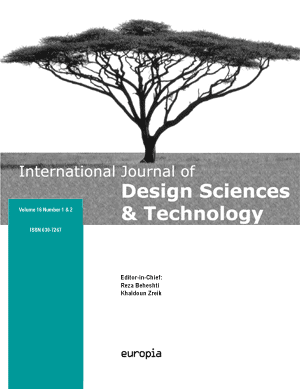 |
|
Revue des Interactions Humaines Médiatisées |
.gif) |



